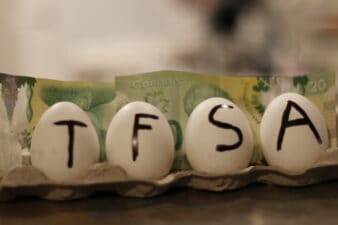Yesterday, Trudeau’s government announced a series of bold, new plans to counter the housing crisis. Measures included a ban on foreign homebuyers, a tax on house flipping, and a new TFSA-like savings account for homebuyers under 40.
It was the last of these measures that got the most attention. On Tuesday, “TFSA” trended on Twitter, as Canadians digested the Liberals’ proposal. The new savings account, dubbed the First-Home Savings Account (FHSA), has the following proposed features:
- Room for up to $40,000 toward buying a home.
- A tax deduction on contribution like an RRSP.
- Tax-free withdrawals like a TFSA.
- The ability to contribute up until the age of 40.
- The ability to hold investments in the account.
Similarity to existing tax-free accounts
Basically, this account looks like the features of an RRSP and a TFSA rolled into one — only with a far smaller contribution limit than either. With RRSPs, you can contribute up to 18% of your income up to a set maximum each year. With TFSAs, you can contribute up to $75,500 with new space being added every year. With the proposed FHSA, however, you’re limited to $40,000.
Another way to look at the FHSA is like an extension of the existing Home Buyers’ Plan. The Home Buyers’ Plan lets you withdraw up to $30,000 from an RRSP tax-free to buy a home. In many ways, the proposed FHSA functions like the Home Buyers’ Plan. You get the deduction on contribution and withdraw tax-free. You could almost think of it as an extension to the Home Buyers’ Plan amount, only in a separate account. Between the Home Buyers’ Plan and the FHSA, Canadians will be able to get tax deductions on up to $70,000 worth of home savings and then withdraw it tax-free when they go to buy.
What to do now?
The FHSA is definitely a step in the right direction in fighting Canada’s housing crisis. Home prices are going up all the time, and many Canadians in big cities are totally locked out of the market. $40,000 in tax-free savings could help a little in ameliorating the situation.
But there’s just one problem: this is just a campaign promise. Nothing is set in stone yet, and after the election, house prices may be even higher than they are today.
This is why you need to start saving for a home now if you want to buy one. By putting money in TFSAs and RRSPs, you can begin building up savings to buy a house. And you can invest your tax-free savings to boost the amount of your down payment. By holding index funds like iShares S&P/TSX 60 Index Fund (TSX:XIU) in a TFSA, you can grow your savings over time. The TSX has averaged about a 9.3% total return since 1960, which is a much better rate of return than you’ll get on a savings account. The XIU fund tracks the TSX 60 Index, so your returns are guaranteed to be about equal to the benchmark (less a small 0.16% fee).
Of course, returns are never guaranteed. I invest in stocks heavily, but I actually put my down payment savings into GICs to guarantee a small return while keeping principal safe. On the whole, my portfolio is a mix of stocks and GICs — stocks for retirement savings, GICs for the down payment. This kind of strategy spreads risk into various levels while promising an adequate return. Your mileage may vary, but this is the savings strategy I’m using at the moment.







